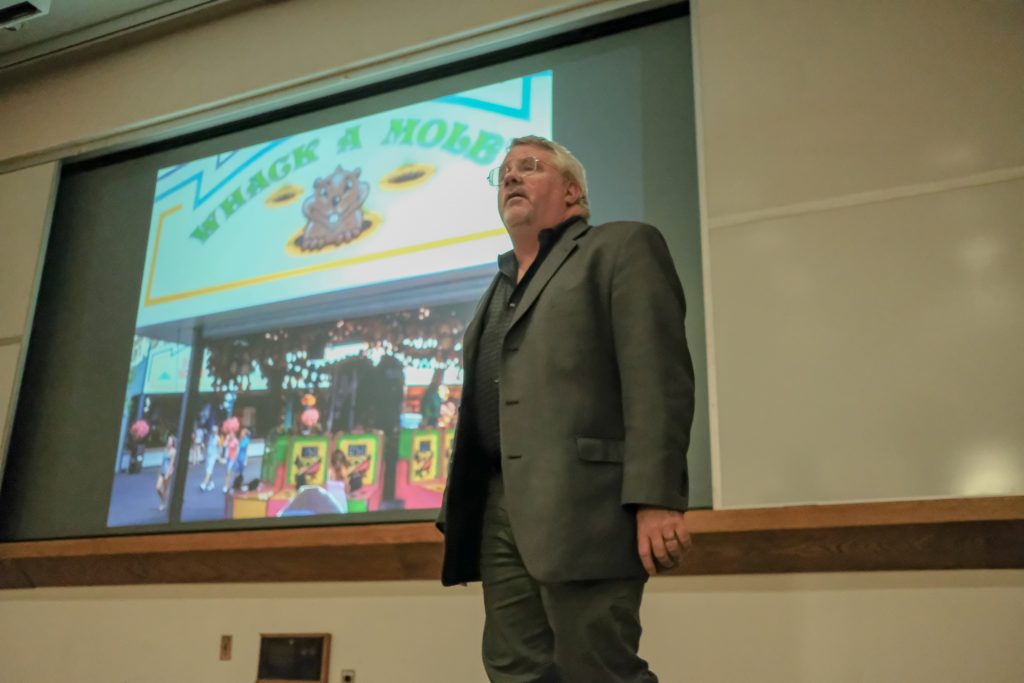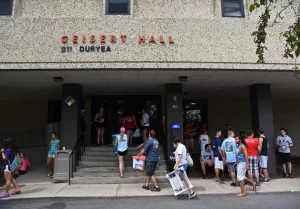
While discussing the future of chemistry, this year’s Kolb Lecture Series speaker emphasized the importance of green education.
John Warner gave his lecture “Green Chemistry: The Missing Elements” on April 9 in Neumiller Lecture Hall. This lecture was the 17th in the series.
Warner is the co-founder of an entire field of chemistry, called Green Chemistry.
Green Chemistry works by considering possible negative impacts when creating new materials. This helps to make ones that aren’t toxic to the environment. As Warner describes, “it’s the very act of removing hazard from society.”
Warner gained inspiration to create Green Chemistry once he realized in all of his education, he had never been taught what makes a chemical toxic.
He shared the emotional story of the passing of his young son, due to a rare liver disease, and how he wondered if it was a chemical that he touched that could have caused the death his child.
Another inspiration for learning how to use non-toxic chemicals was when his friend and fellow member of his band, The Elements, passed away from Leukemia.
To create change in chemistry, Warner said he and his partner, Paul Anastas, needed to create a new science.
But the goal of Warner’s lecture wasn’t just to highlight the importance of Green Chemistry. It was to inspire people to follow the principles of Green Chemistry.
“I’m looking at an audience of students who are trying to decide what to do with the rest of their lives,” Warner said.
Warner said he is optimistic about the future.
“The next generation gets it,” Warner said. “They don’t need to be told they need to do it, they just need to be taught.”
Judging by the interest of his audience, he’s right.
Faculty members caught his excitement. Chemistry and biochemistry department chair Brian Andersh said he felt energized after hearing Warner speak.
“His energy, his passion is contagious,” Andersh said.
Francesca Piccione, an Illinois Central College biology major who attended the lecture said she enjoyed the event.
“This kind of lecture makes learning so accessible,” Piccione said.
Even though Piccione wants to go into medicine, a seemingly separate field from industrial chemistry, she thought how what Warner discussed could be applied to her future career.
Kristine Campbell, a junior chemistry major, is hoping to become an environmental chemist. She spoke to Warner after his lecture and said it helped her learn about different opportunities in the field.
Warner is also the founder of the research institute Warner Babcock Institute for Green Chemistry and the non-profit Beyond Benign.
He received his Bachelor’s in Chemistry from University of Massachusetts at Boston, and his Ph.D in Chemistry from Princeton University. Warner also received the Perkin Medal in 2014, one of the most illustrious awards industrial chemists can receive.
Additionally, Warner wanted to push schools like Bradley to change how they educate future chemists.
Several universities have already signed Warner Babcock’s Green Chemistry Commitment, a commitment to have Green Chemistry integrated into their education. Warner hopes Bradley is next.
While various faculty members are doing research in Green Chemistry, Andersh conceded, Bradley doesn’t make enough of an effort to expose students to Green Chemistry throughout the curriculum. However, he is positive about change.




